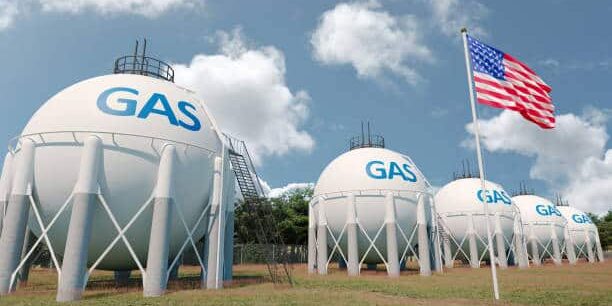North America’s liquefied natural gas export capacity is expected to more than double by 2029, marking a significant boost to global energy and supply chain connectivity. This expansion highlights the region’s growing influence in international energy trade, promoting greater stability and accessibility across global markets.
According to the U.S. Energy Information Administration, total liquefied natural gas export capacity in North America will increase from 11.4 billion cubic feet per day at the beginning of 2024 to 28.7 billion cubic feet per day by 2029. The United States, already the world’s leading exporter, plans to add around 13.9 billion cubic feet per day during the same period.
The United States will focus much of this growth along the Gulf Coast, the country’s main hub for energy exports. To support this expansion, new infrastructure such as pipelines and storage facilities is being developed to ensure a smooth flow of natural gas from production sites to export terminals—strengthening logistics and overall supply reliability.
Several major projects are currently under construction in the United States, including Port Arthur Phase 1, Rio Grande, Woodside Louisiana, Golden Pass, and CP2 Phase 1. Together, these projects are expected to significantly increase capacity while enhancing regional connectivity within the energy supply chain.
In Canada, the first liquefied natural gas export terminal in British Columbia shipped its initial cargo in mid-2025. The facility can produce 1.84 billion cubic feet per day and is projected to reach full capacity in 2026. Its location on the west coast shortens shipping times to Asian markets by nearly half, improving efficiency and positioning Canada as a competitive exporter in the Pacific region.
Plans for a second phase of the Canadian project would double its capacity after 2029, while additional projects such as Woodfibre and Cedar are advancing toward completion between 2027 and 2028. These developments will expand Canada’s role in global energy trade and contribute to regional supply chain resilience.
Mexico is also emerging as an important energy export hub. Two liquefied natural gas facilities—Fast Altamira Floating and Costa Azul—are currently under construction, adding 0.6 billion cubic feet per day in total capacity. Both projects will use natural gas from the United States, reflecting strong regional cooperation and integration within North America’s energy supply network.
North America’s planned export capacity additions represent over half of expected global growth through 2029. With expanding infrastructure, efficient trade routes, and coordinated regional strategies, the continent is set to strengthen its leadership in energy exports while enhancing global supply chain sustainability.
#ICTTMNewsUpdates #GlobalTrade #EnergySupplyChain #SustainableGrowth #ExportExpansion







